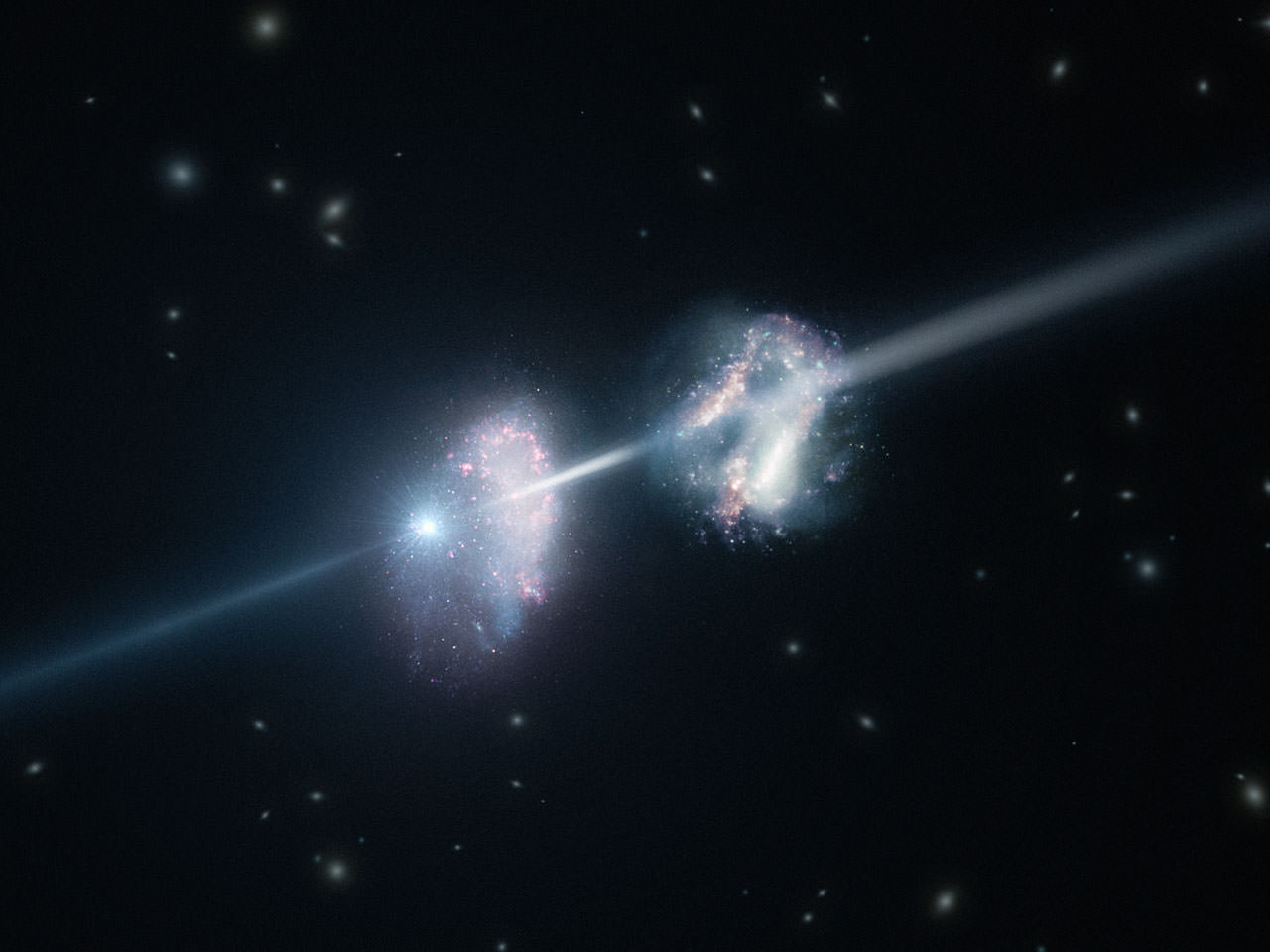A team of astronomers has found that giant, organized magnetic fields can help drive some of the most powerful explosions in the universe. But when all is said and done, the shock wave from that blast scrambles any magnetic fields in a matter of minutes.
Some gamma-ray bursts (GRBs) occur when giant stars die. Their cores fold in on themselves, collapsing to form a black hole. Soon after it forms, material from the surrounding star falls inwards. There, the intense energies drive the creation of huge, powerful, structured magnetic fields. Those magnetic fields whip some of the in-falling material around the black hole and out along two long, thin jets. When viewed from Earth, its these jets that give this event its characteristic flash of high-energy gamma ray radiation.
But the story doesn’t end there. The remainder of the star continues exploding, sending out a shock wave. That shock wave quickly destroys the magnetic field, leaving only tangled wreckage in its wake.
At least, that’s the theory. But demonstrating the correctness of that theory has been a challenge, because astronomers have to measure the magnetic fields soon after the gamma ray burst event.
So a team of astronomers did just that, announcing their results in a recent paper.
Head of Astrophysics at Bath and gamma-ray expert Professor Carole Mundell, said: “We measured a special property of the light – polarization – to directly probe the physical properties of the magnetic field powering the explosion. This is a great result and solves a long-standing puzzle of these extreme cosmic blasts – a puzzle I’ve been studying for a long time.”
The team measured the polarization of the magnetic fields and found that it was highly polarized – indicating that it was very structured – mere minutes after a GRB. Other observations, taken hours or days after a GRB, show little to no polarization, indicating that the shock wave had scrambled the magnetic field.
Nuria Jordana-Mitjans, a graduate student and lead author on the paper, said: “This new study builds on our research that has shown the most powerful GRBs can be powered by large-scale ordered magnetic fields, but only the fastest telescopes will catch a glimpse of their characteristic polarisation signal before they are lost to the blast.”
Professor Mundell added: “We now need to push the frontiers of technology to probe the earliest moments of these blasts, capture statistically significant numbers of bursts for polarisation studies and put our research into the wider context of real-time multimessenger follow-up of the extreme Universe.”

